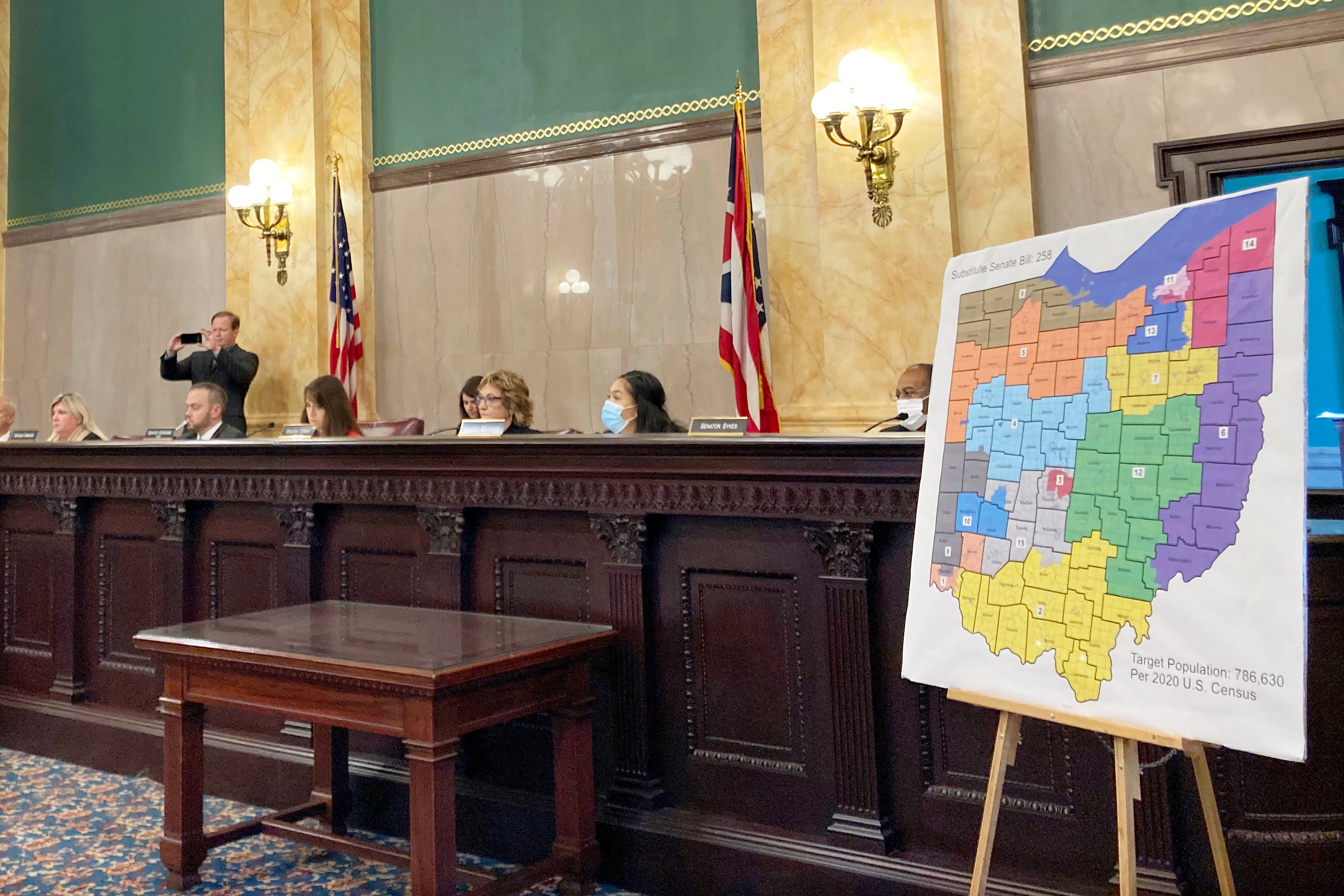Ohio Supreme Court rejects GOP-drawn congressional map
The Ohio Supreme Court has rejected a new map of the state’s 15 congressional districts as gerrymandered, sending the blueprint back for another try

Your support helps us to tell the story
From reproductive rights to climate change to Big Tech, The Independent is on the ground when the story is developing. Whether it's investigating the financials of Elon Musk's pro-Trump PAC or producing our latest documentary, 'The A Word', which shines a light on the American women fighting for reproductive rights, we know how important it is to parse out the facts from the messaging.
At such a critical moment in US history, we need reporters on the ground. Your donation allows us to keep sending journalists to speak to both sides of the story.
The Independent is trusted by Americans across the entire political spectrum. And unlike many other quality news outlets, we choose not to lock Americans out of our reporting and analysis with paywalls. We believe quality journalism should be available to everyone, paid for by those who can afford it.
Your support makes all the difference.Ohio's Republican-drawn congressional map was rejected by the state's high court Friday, giving hope to national Democrats who had argued it unfairly delivered several potentially competitive seats in this year's critical midterm elections to Republicans.
In the 4-3 decision, the Ohio Supreme Court returned the map to the Ohio General Assembly, where Republicans hold supermajorities in both chambers, and then to the powerful Ohio Redistricting Commission. The two bodies have a combined 60 days to draw new lines that comply with a 2018 constitutional amendment against gerrymandering.
The powerful redistricting commission was already in the process of reconstituting so it can redraw GOP-drawn legislative maps the court also rejected this week as gerrymandered. That decision gave the panel 10 days to comply, raising growing concerns about the looming Feb. 2 candidate filing deadline for the May primary.
Neither the congressional nor the legislative maps drew a single Democratic vote.
Writing for the majority, Justice Michael Donnelly, one of the court’s three Democrats, wrote, ”(T)he evidence in these cases makes clear beyond all doubt that the General Assembly did not heed the clarion call sent by Ohio voters to stop political gerrymandering.”
The court’s three Democrats were joined by Chief Justice Maureen O’Connor, a moderate Republican set to depart the court due to age limits at the end of the year.
The court’s three other Republicans — including Justice Pat DeWine, son of Republican Gov. Mike DeWine a named plaintiff in the cases — dissented.
They said it was unclear how it should be determined that a map “unduly favors” one party over another.
“When the majority says that the plan unduly favors the Republican Party, what it means is that the plan unduly favors the Republican Party as compared to the results that would be obtained if we followed a system of proportional representation,” the dissent said.
They explained that the U.S. has never adopted a system that requires congressional seats to be proportionally distributed to match the popular vote, nor does Ohio’s Constitution require it.
The decision affects separate lawsuits brought by voting-rights and Democratic groups, which argued it was indisputable that the map unconstitutionally “'unduly’ favors the Republican Party.” The two suits were brought by the National Democratic Redistricting Commission’s legal arm, as well as the Ohio offices of the League of Women Voters and the A. Philip Randolph Institute.
The groups said either 12 or 13 of the map’s 15 districts favor Republicans, despite the GOP garnering only about 54% of votes in statewide races over the past decade.
Republicans had defended the map as fair, constitutional and “highly competitive.”
Voting rights advocates and Democrats praised the ruling.
“The manipulation of districts is the manipulation of elections and voters have had enough,” said Catherine Turcer, executive director of Common Cause Ohio, a plaintiff. “We expect legislative leaders to learn from their mistakes and finally listen to the people’s call for fair maps.”
Ohio and other states were required to redraw their congressional maps to reflect results of the 2020 census, under which Ohio lost one of its current 16 districts due to lagging population.